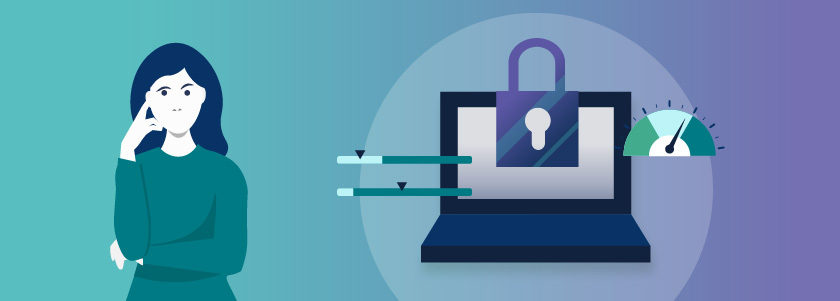What is SOC 2 Compliance? [Complete Guide]
As a business owner, risk, or compliance professional in today’s world, there are millions of compliance requirements to be weary of every day. One of the most noteworthy compliance achievements is SOC 2.
This guide will delve into what is SOC, what is SOC 2, important SOC 2 risks, what is SOC 2 compliance and how do you achieve it, tracking SOC 2 compliance reports and tips and best practices to keep in mind along the way.
Table of Contents
What is SOC?
One of the most effective ways an organization can communicate information about their controls is through a Service Organization Control (SOC) report. SOC reports, also known as SSAE 16 Standards, are becoming more and more popular in data security and compliance discussions with every passing year.
What is SOC 2 Compliance?
Developed by the AICPA, SOC 2 is “designed for the growing number of technology and cloud computing entities that are becoming very common in the world of service organizations.” At the most basic level, SOC 2 reports allow organizations to communicate information that relates specifically to how their system operates in accordance with criteria related to availability, security and confidentiality.
SOC 2 Compliance Requirements
If you store data, chances are your organization is subject to be required to achieve SOC 2 compliance. But what exactly does this entail?
SOC 2 ensures that your company’s information security measures are in line with the unique parameters of today’s cloud requirements.
A SOC 2 report is considered a technical audit, but it goes beyond that to stipulate that companies must establish strict information security policies and procedures.
Here is a breakdown of the five Trust Services Principles that comprise a SOC 2 report which you must meet in order to obtain SOC 2 compliance:
- Security: The organization’s information and systems are protected against unauthorized access and disclosure of information, and damage to systems that could compromise the availability, integrity, confidentiality and privacy of information or systems or affect the entity’s ability to meet its objectives.
- Availability: Information and systems are readily available for operation and use to meet objectives.
- Processing integrity: This signifies that system processing is complete, valid, accurate, timely and authorized.
- Confidentiality: Information designated confidential is adequately protected to meet the entity’s objectives.
- Privacy: Personal information is collected, used, retained, disclosed and disposed appropriately.
Unlike other data privacy requirements, SOC 2 compliance requirements allow for more flexibility on the data provider’s side, which means that SOC 2 reports are unique to each company. Essentially, the data provider can determine which requirements are relevant to their business practices and consequently design their own controls to fit those requirements.
Related Post: SOX VS SOC Guide
Why Is SOC 2 Compliance Important?
Many organizations don’t want or need to be SOC 2 compliant themselves, but they still need to ensure that their vendors are SOC 2 compliant. If this describes your business, it’s critical to know that your information is protected.
A SOC 2 report signifies that an organization is compliant with SOC 2 requirements. A clean SOC 2 report means that you can rely on that company and their hosting provider for secure, compliant hosting, and in turn prove to stakeholders and regulators they are a trustworthy organization (and ultimately, that you are too).
Reviewing your vendors’ SOC 2 reports gives you insight into the risk they pose to your organization. Knowing for certain that your vendors have the proper procedures in place to protect you and your customers’ information, you can feel better about providing personal information or other critical data to customers, employees or other third parties.
A great way to get start with SOC 2 Compliance is to download of SOC 2 Compliance checklist.
SOC 2 Risks
Your organization may not think they’re responsible for maintaining SOC 2 compliance. But jumping to this conclusion comes with significant risks:
- Neglecting SOC 2 compliance means you’re missing out on potential customers, as many companies and individuals look to ensure that their service providers are keeping their information safe. They’ll often ask for a SOC 2 compliance report, and if you cannot provide one, they may go elsewhere. This inadvertence can just as easily turn away existing customers.
- SOC 2 ensures that your organization is protected from critical IT threats. Should one of these risks manifest into an incident such as a data breach, in addition to incident and negligent legal liabilities, the loss from customer non-renewals and cancellations is significant. In fact, it’s estimated that the total average cost of a data breach is $3.8 million.
- Negligence is 100% avoidable – but once you’re found guilty of it, the fees associated with hiring lawyers, consultants and internal specialists skyrocket quickly. Remaining in compliance with SOC 2 (and having a software that documents your due diligence efforts along the way) helps prevent negligence.
You May Also Like: What Is SOX Compliance?
Achieve SOC 2 Compliance with our Platform
LogicManager will help you determine which SOC 2 requirements apply to your organization, design controls to meet those requirements, monitor their effectiveness and report on your overall GRC program.
More specifically, here’s how LogicManager’s SOC 2 compliance software solution addresses each of the 5 criteria for SOC 2 compliance:
Security: Gather evidence that sufficient physical and electronic controls are in place to protect sensitive information. Being able to provide evidence of these controls, monitor incidents and document security measures is critical to managing ongoing threats.
Availability: Does your organization provide services that other businesses rely on? Do you rely on data centers or telecommunication companies? Availability to these services is central to maintaining business operations, and in order to meet Master Service Level Agreements and avoid major downtime, it’s vital to identify negative trends in data availability. LogicManager can help you identify these trends.
Processing integrity: LogicManager helps you demonstrate your organization’s ability to honor agreements in a timely and consistent manner. This proves that you have the measures in place to provide complete, valid and accurate delivery of services.
Confidentiality: Just because information isn’t technically considered PII/PPI does not mean that it isn’t confidential. One of the benefits you’ll experience using LogicManager for your SOC 2 compliance needs is the ability to document and verify that you have the technical and procedural means to honor MSAs, DSAs and other contractual agreements that may include data confidentiality clauses.
Privacy: One of the most critical steps in building trust with your customers is by maintaining compliance with a variety of privacy frameworks (such a SOC 2). LogicManager has dozens of out-of-the-box privacy compliance frameworks, making it easy to achieve compliance in other areas wherever needed.
Track SOC 2 Reports with LogicManager
Tracking your third party SOC 2 reports can be a cumbersome process. LogicManager helps eliminate the pain points associated with this evidence collection.
Streamline your processes: Without software, it can be difficult to manage and organize all of the information you’re collecting on your vendors – including their SOC reports. Having a system that allows you to easily organize and access third party SOC reports securely and confidently streamlines your processes.
Increase data security: Knowing for certain that vendors have the proper procedures in place to protect you and your customers’ information, you can feel better about providing PII or other critical data to third parties.
Maintain an audit trail: Doing your due diligence with ongoing SOC report tracking helps you better understand the risk that each vendor has on your organization; the proof is right there in their documentation. This documentation can be easily accessed and demonstrated to auditors, investors or other key stakeholders.
Using LogicManager’s centralized repository, you’ll have a one-stop shop to access whenever you need information. This will save you time and energy in both the short and long term.
Leverage automated workflows and tasks to ensure that SOC reports are reviewed appropriately and in a timely manner. Whether you’re initially reaching out to the vendor to get an updated report, or reviewing internal information to ensure their information is adequate, there’s a workflow for you.
LogicManager is also a fully integrated ERM software built on a foundation of taxonomy technology. By nature, we help you take a risk-based approach to tracking compliance. The risk-based approach changes compliance from an isolated process to one that provides real value for each part of the business.
To learn how LogicManager’s SOC Report Tracking solution package can help transform your Vendor Management program, request your free demo today.
Conclusion
To stay on top of today’s growing demand for SOC 2 compliance, it’s important to get ahead. Start benchmarking your organization’s security, availability, processing integrity, confidentiality and privacy measures against SOC 2 requirements today and see how you stack up.
With LogicManager as your mission-critical partner, you’ll work smarter, not harder. From our compliance AI functionality, to automated workflows, robust reporting engine, out-of-the-box checklists and more, it’s easier than ever to achieve, maintain and track SOC 2 compliance. And ultimately, that means more time is left on your side for driving success for your business.


